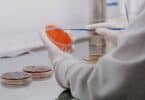What is left-ventricular heart failure?
The left side of the heart is affected by two forms of heart failure: diastolic and systolic. In case you’ve been diagnosed with left-ventricle (left-sided) heart failure, you may want to learn more about what those words mean.
Cardiac failure is usually a disease that happens when the heart is not functioning well enough to keep you fit. When you do physical activity or feel stressed, your heart can pump even less efficiently.
In the case you are experiencing a systolic failure of the heart, this means that during heartbeats, the heart does not contract well, whereas, in the case of diastolic heart failure, your heart can not relax between beats normally. Both forms of left-sided heart failure can result in heart failure on the right side.
There are some similarities and some variations when it comes to diagnosing and treating the two forms of heart failure. Continue reading to learn about both heart failures, that is, systolic and diastolic.
Diastolic heart failure
Diastolic heart failure is a condition in which the ventricles do not fill properly under normal volumes and pressures. Diastolic heart failure has decreased the function of one or both ventricles during diastole.
There is little relaxation of the ventricles and poor filling. High blood pressure, aortic valve obstruction, age, diabetes, constrictive pericarditis, amyloidosis, sarcoidosis, and fibrosis are known risk factors. In hypertension, the thickness of the left ventricle increases to cope with higher blood pressures.
The heart muscle thickens to pump more blood when the aortic valve is narrow. Thicker muscle means smaller end-diastolic volume. There is less padding that leads to poor output. Patients with diastolic heart failure present with swelling of the legs, shortness of breath, abdominal distention, and an enlarged liver.
Systolic heart failure
Systolic heart failure has a decreased ability of the ventricles to contract during systole. It is a condition where the heart does not pump well. The heart chambers fill adequately during diastole, but it cannot push blood into the aorta with enough force to maintain good blood pressure. Ischemic heart disease is the most common cause. The heart muscle heals with a scar after a heart attack.
This scar tissue cannot contract as well as the other parts of the heart. Patients with systolic heart failure present with poor exercise tolerance, chest pain, dizziness, lightheadedness, low urine output, and cold peripheries. The ECG may show ischemic changes.
Difference between systolic and diastolic heart failure
Many people have confusion about Systolic Heart Failure and Diastolic Heart Failure. There are different heart conditions, and their impact is also nonsense. After reading this blog, you are already aware of the Diastolic heart failure; it happens when the left ventricle is unable to relax and allow the blood to flow through the heart in the next beat. It is also known as “heart failure with preserved ejection fraction (HFpEF)”
Whereas Systolic heart failure is known as HFrEF, which is “heart failure with reduced ejection fraction. “In this condition, your heart is not able to produce the adequate force required to pump the blood for the body.
In other words, Diastolic heart failure is a condition in which the ventricles do not fill properly under normal volumes and pressures. Systolic heart failure is a condition in which the heart does not pump well. Both conditions are on the rise. According to the world health organization, the recent pandemic rise in ischemic heart disease and heart failure is due to alcohol, smoking, and a sedentary lifestyle.
This article will discuss both conditions in detail, highlighting their clinical features, symptoms, causes, investigation and diagnosis, prognosis, the treatment they require, and the differences between systolic and diastolic heart failure.
How to Diagnose Systolic Heart Failure
In Systolic heart failure, the left heart ventricle can’t fully contract. And this leads to your heart not able to pump vigorously enough to transfer blood efficiently across your body.
Systolic heart failure can also be referred to as “heart failure with reduced ejection fraction” (HFrEF).
The term “Ejection fraction” (EF) refers to the quantity of blood a heart ventricle gives out each time it beats. The faster the heart pumps out, the stronger it becomes.
Doctors, after performing an imaging test, including an echocardiogram, will tell you your EF as a percentage. It is considered normal between 50 and 70% EF. (Other forms of heart failure can still happen, even though your EF is normal.)
An EF less than 40% implies that you have decreased ejection fraction, in other words, systolic heart failure.
How to Diagnose a Diastolic Heart Failure
In Diastolic heart failure, your left ventricle is unable to relax properly between heartbeats in the sense that its tissues have turned rigid. If your heart can not relax completely, it will not fill up with blood again before the succeeded beat comes in.
This form can also be referred to as “preserved ejection-fraction heart failure” (pEFHF). Your doctor may conduct a test (imaging) on your heart in this form to find out that your EF is alright. Your doctor will also determine whether you are with any heart failure signs and if there is proof that your heart is not working very well. If those conditions are confirmed, diastolic heart failure can be diagnosed.
Most often, this form of heart disease affects women of older age. It usually happens along with other forms of heart disease and other disorders that are not related to the heart, such as lung disease and cancer.
Systolic heart failure Medications
Many drugs are available for the purpose of treating systolic heart failure. Which are:
- Angiotensin receptor-neprilysin (ARN) inhibitors
- Angiotensin receptor blockers (arbs)
- Angiotensin-converting enzyme (ACE) inhibitors
- Digoxin
- Beta-blockers (bbs)
- F-channel blockers
- Diuretics
- Mineralocorticoid receptor antagonists (mras)
- Inotropes
A mixture of these drugs can be much effective for some people.
For instance, a drug prescription that mixes valsartan, an ARB, with sacubitril, an ARN inhibitor, was labeled “first Class Trusted Source” by the United States Food and Drug Administration (FDA) in the year 2015. Whenever a medication is creative, the FDA designates it as first-class, and also because it functions in a way that is distinct from previous alternatives.
A study conducted in 2017 reviewed 57 prior combination treatment trials. It showed that people taking a mixture of MRAs, ACE inhibitors, and BBs had a 56% decreased risk of systolic heart failure death when related to those taking placebo. Also, it was found that those individuals who took a mixture of MRAs, ARN inhibitors, and BBs had a reduced mortality rate of 63% when related to those who are taking placebo.
Diastolic heart failure Medications
Doctors can use many of the same medications to treat diastolic heart failure, which are options for systemic heart failure. Though this form of heart failure is not equally well known or researched. That is, physicians don’t have the same recommendations for the most appropriate medication plan for it.
Overall, the key methods for the treatment of diastolic heart failure are:
Relaxing drugs or drugs for expanding blood vessels, possibly BBs, ARBs, long-acting nitrates, or blockers to the calcium channel. It may also contain vasodilators, including nitroglycerin.
Medicines to minimize the build-up of fluids. Diuretics, also known as “fluid tablets,” assist you in getting rid of extra fluid in your body.
Medicines intended to regulate other ailments. For instance, ailments like hypertension, which may significantly affect diastolic heart failure.
Other approaches to treating left-sided heart failure
Implanted devices
A device that is surgically implanted enhances heart function for certain people with left-sided heart failure. Example of these are:
Implantable defibrillator with cardioverter (ICD)
In the case you suffer from heart failure and heartbeats that are irregular, this can normalize your heart via a shock when the pulse is abnormal. This once again makes your heartbeat normally.
Cardiac resynchronization therapy (CRT)
A special pacemaker that helps your heart ventricles contract properly and in the correct order.
Left ventricular assist device (LVAD)
It resembles a pump, and it is also known as the “Transplant bridge.” Its main purpose is to assist the left ventricle in performing its work whenever it’s unable to function well. It is beneficial during a heart transplant.
Surgery
Surgery is recommended in some cases for treating left-sided heart failure. Two principal forms of surgery exist:
Corrective surgery
In the case where your heart is having a physical problem that causes heart failure or worsens it, you may need to get surgery to repair it. Take, for example, a bypass of the coronary artery, rerouting blood through an artery that is blocked, and an operation to replace the valve, which makes corrections to a valve that does not function properly.
Transplant
In the case heart failure continues to a very critical condition, you may require a donor to donate a new heart. Moreso, you must be placed on some drugs after this operation for your body not to reject the newly transplanted heart.
The takeaway
In the case heart failure has been diagnosed in you, address what sort of heart failure you have with your doctor. Comprehending the heart failure type will aids you in better understand your treatment choices. The best way to control the disease and complications risk is to stick to the care plan and take your medicine as recommended.
Systolic vs. diastolic heart failure
• Old age, diabetes, ischemic heart disease, and high blood pressure are known risk factors for systolic and diastolic heart failure.
• Both conditions need the same investigations. The echocardiogram measures the size of the heart chamber.
• Left ventricular mass increases in both conditions.
• Only part of the end-diastolic ventricular volume enters the aorta during systole. In healthy individuals, it is more than 65%. The ejection fraction is normal in diastolic heart failure, while it is low in systolic heart failure.
• Angiography may be necessary regardless of the type of heart failure.
• Symptomatic systolic and diastolic heart failure have similar mortality rates.
• However, systolic heart failure is more common than diastolic heart failure.
• High blood pressure is the most common cause of diastolic heart failure, while ischemia is the most common cause of systolic heart failure.
• The size of the left ventricular cavity increases in systolic heart failure while it is normal or low in diastolic heart failure.
• The thickness of the ventricular wall increases in diastolic failure, while it decreases in systolic failure.
• Poor contractile function is the major malfunction in systolic failure, while excessive passive stiffness and poor relaxation are the main dysfunctions in diastolic failure.
• The left ventricle dilates in systolic heart failure, whereas it does not in diastolic heart failure unless there is associated ischemia.
• Many advances have been made in the treatment of systolic heart failure, while the management of diastolic heart failure remains much the same.
• Chronic resynchronization with or without a defibrillator improves the prognosis of systolic heart failure, while studies have not shown a significant benefit of resynchronization in diastolic heart failure.
• Advanced systolic heart failure can also have poor filling characteristics (a component of diastolic failure), while diastolic heart failure does not have poor performance features (a component of systolic failure).
Lifestyle changes
Take these steps to improve your heart condition, so that you never face any heart issues:
- Be active
- Eat a healthy diet
- Get regular checkups
- Maintain a healthy weight
- Reduce your alcohol intake
- Stop smoking
See Also
How long does Lasik Last?
Occupational Therapy vs Physical Therapy









